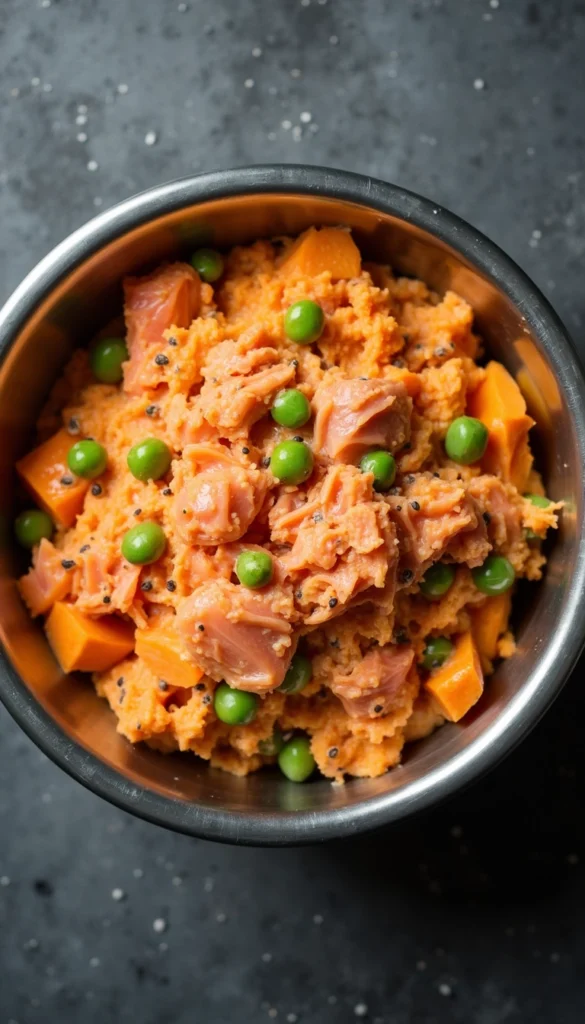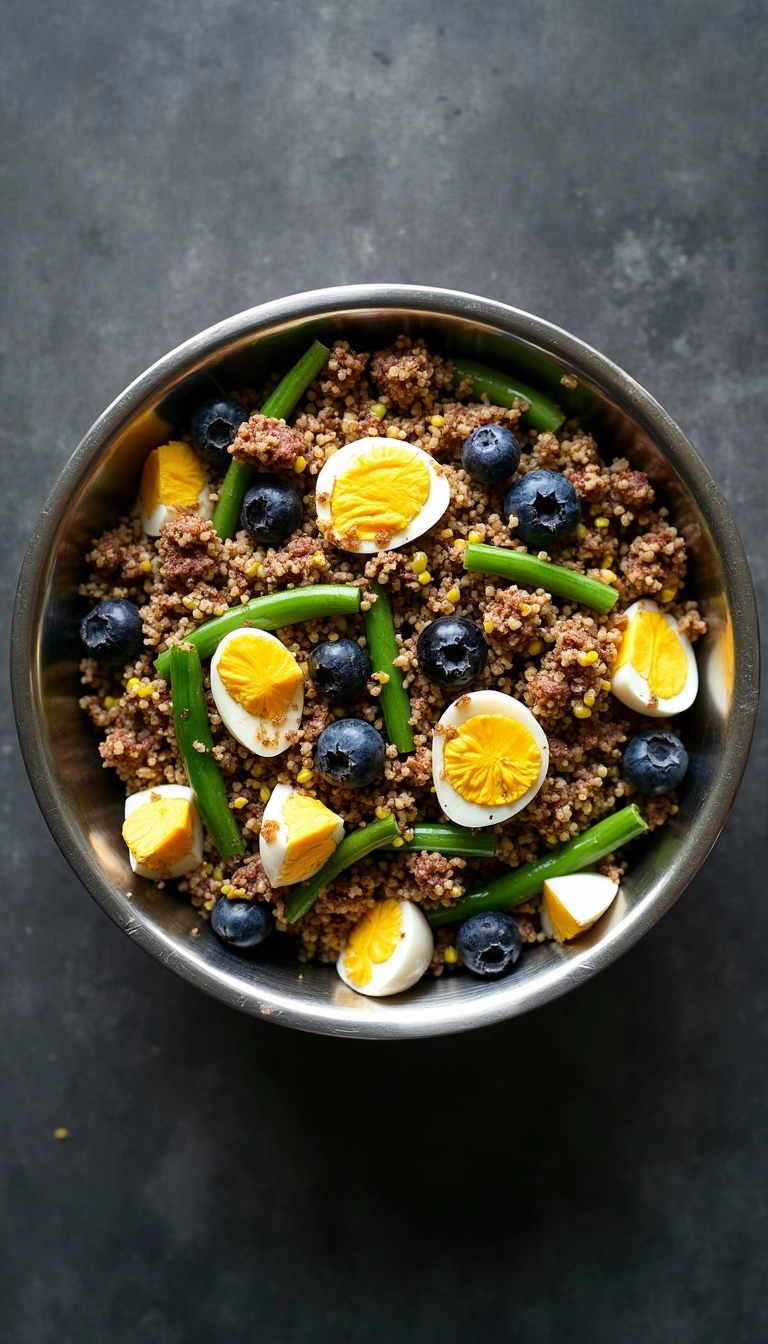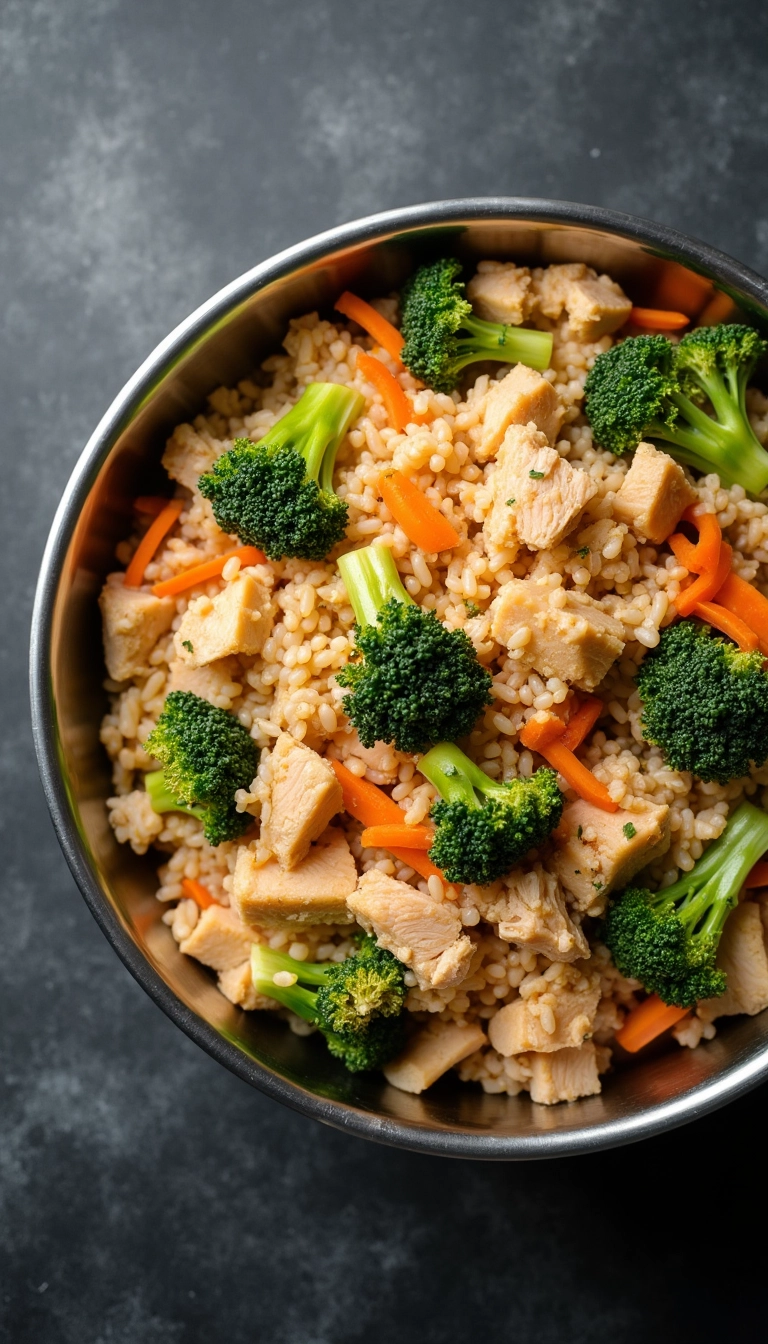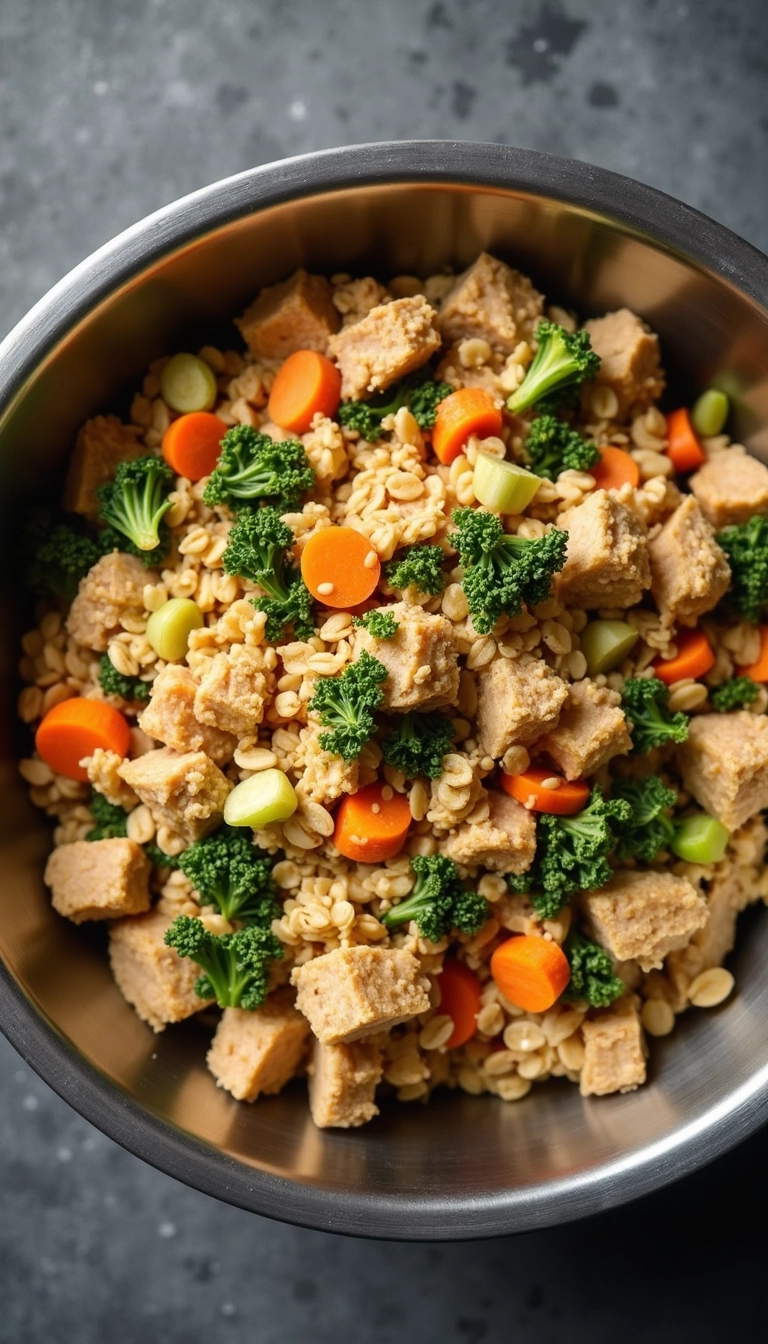Making homemade food for dogs with arthritis doesn’t have to be complicated! As someone who’s created countless healthy dog food recipes, I’m thrilled to share this game-changing homemade dog food that’s specifically designed for our furry friends with joint issues. Did you know that up to 20% of adult dogs suffer from arthritis? This best homemade dog food recipe combines omega-3 rich salmon with antioxidant-packed sweet potatoes, creating one of the healthiest dog food recipes for managing joint inflammation.
When it comes to making the best homemade dog food, quality ingredients and proper nutrition are crucial. This healthy homemade dog food recipe has helped numerous dogs maintain their mobility and enthusiasm for life, making it a favorite among pet parents looking for natural arthritis support.
Note: While this recipe has helped many dogs, remember to consult with your veterinarian before transitioning to any new homemade dog food recipes, as they can help customize portions and ingredients based on your pet’s specific needs.

Homemade Dog Food For Arthritis: Salmon & Sweet Potato Recipe
Description
A nutritious and easy homemade dog food recipe featuring anti-inflammatory ingredients like omega-3 rich salmon and sweet potatoes. This healthy dog food recipe is specifically formulated to support joint health and mobility in dogs with arthritis.
Ingredients
Instructions
-
If using frozen salmon, thaw completely in refrigerator
-
Cook salmon thoroughly until it flakes easily (internal temperature 145°F)
-
Remove any bones and skin carefully
-
Flake into small, bite-sized pieces perfect for your dog
-
Peel and cut sweet potatoes into 1-inch cubes for even cooking
-
Boil in fresh water until fork-tender
-
Drain thoroughly and mash until smooth
-
Let cool slightly before mixing
-
Steam peas until tender but still bright green. Avoid overcooking to preserve nutrients.
-
Mix flaked salmon, mashed sweet potatoes, and steamed peas
-
If using, sprinkle chia seeds and mix well
-
Allow to cool to room temperature before serving
-
Feed approximately 1 cup of this homemade dog food per 25 pounds of your dog's body weight daily, divided into 2-3 meals. Adjust portions based on your dog's activity level, age, and overall health needs.
-
Store unused portions in airtight containers in the refrigerator for up to 5 days, or freeze for up to 3 months. When freezing, divide into individual portions for easier thawing.



